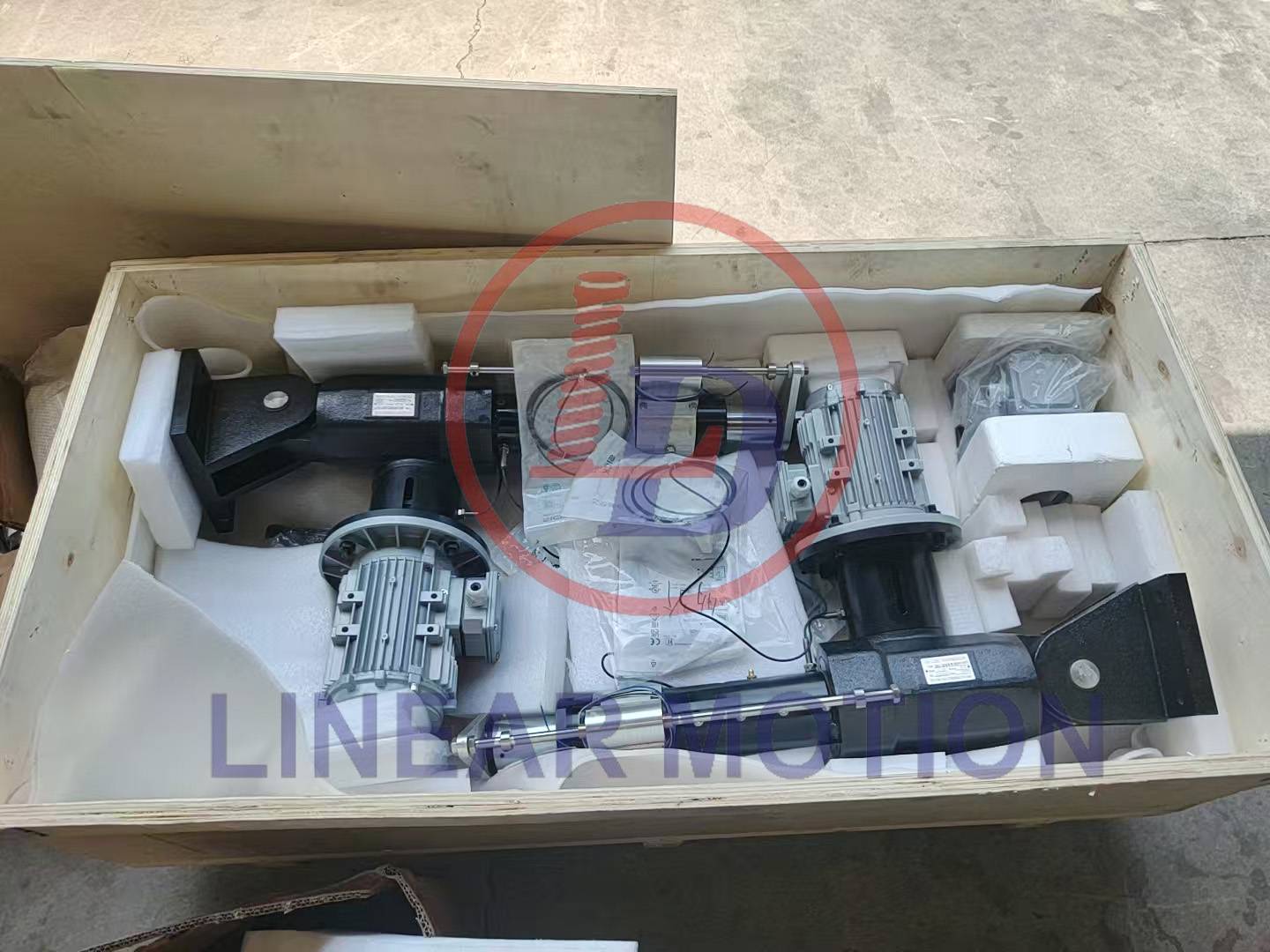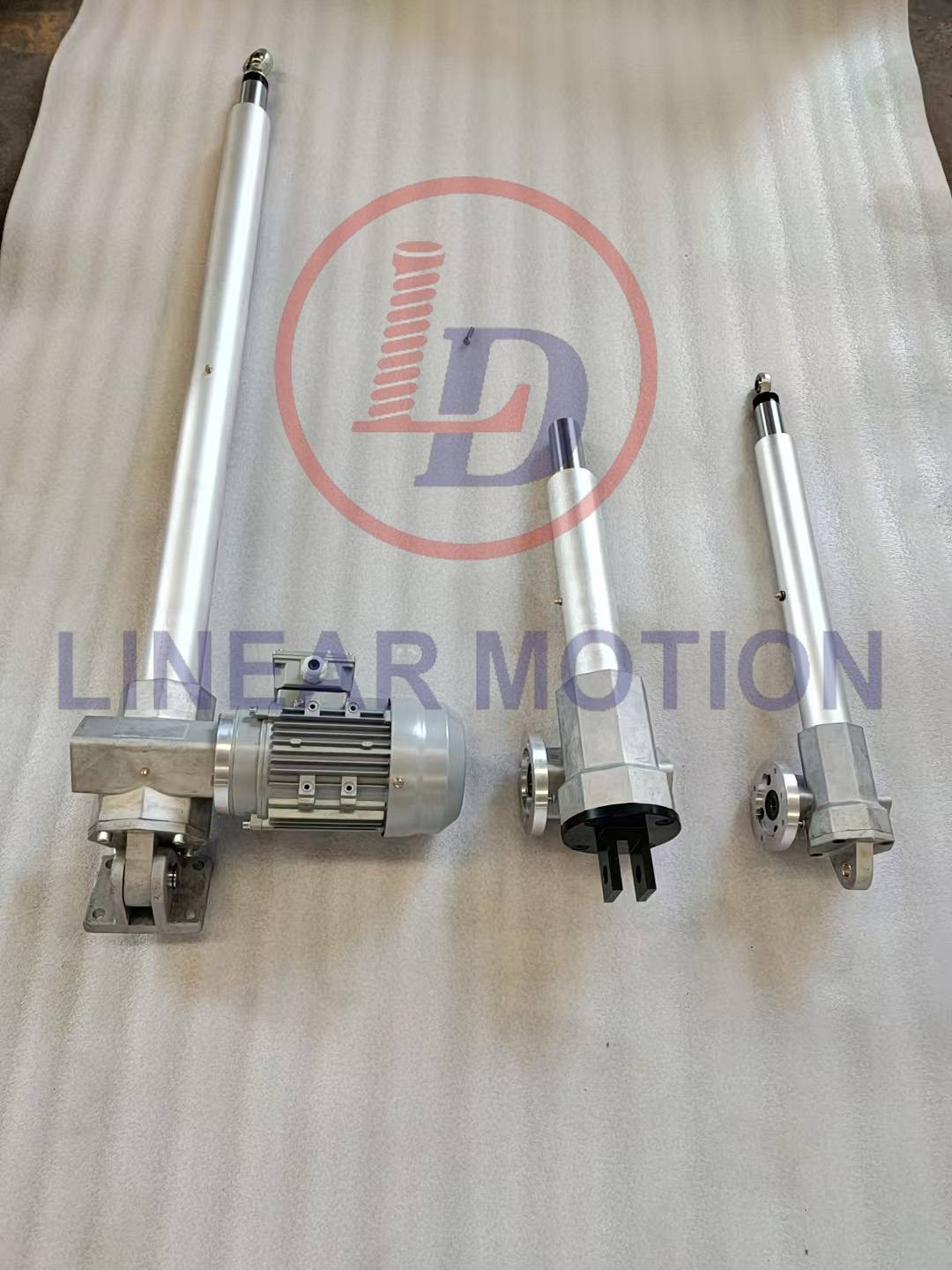In automation systems, a linear actuator serves as a critical component that converts various forms of energy (such as electrical, hydraulic, or pneumatic) intocontrolled linear motion(push, pull, lift, or lower). Its primary functions and roles in automation can be categorized as follows:
1. Enabling Precise Positioning
Linear actuators provide accurate control over the linear displacement of components, ensuring that parts, tools, or workpieces move to specific positions with high repeatability. This is essential in automated production lines, where tasks like:
-
Aligning components during assembly (e.g., inserting a pin into a hole with millimetric precision).
-
Positioning sensors or cameras for quality inspection (e.g., scanning products at exact intervals).
-
Adjusting tooling (e.g., moving a cutting blade to a precise depth in machining).
2. Driving Load Handling
They generate force to move or manipulate loads, ranging from lightweight objects to heavy machinery. This function is vital for:
-
Material handling: Pushing pallets onto conveyor belts, lifting goods in warehouses (e.g., automated storage systems).
-
Clamping or gripping: Securing workpieces during manufacturing processes (e.g., holding a metal part while welding).
-
Pressing or stamping: Applying controlled force to shape materials (e.g., in automotive part production).

3. Enabling Sequential Automation
Linear actuators integrate with control systems (e.g., PLCs, microcontrollers) to execute predefined motion sequences, enabling fully automated workflows. For example:
-
In packaging machines: Pushing products into boxes, sealing lids, or adjusting packaging film tension in a synchronized order.
-
In robotics: Moving robotic arms or end-effectors through specific paths to complete tasks like picking and placing items.
4. Adapting to Variable Conditions
Many linear actuators offer adjustable speed, force, and stroke length, allowing automation systems to adapt to changing requirements:
-
Adjusting the speed of a conveyor pusher based on product size.
-
Modifying clamping force to handle delicate items (e.g., electronics) vs. rigid materials (e.g., metal).
-
Extending or shortening stroke length to accommodate different workpiece dimensions without reconfiguring the entire system.
5. Enhancing Safety and Efficiency
By replacing manual linear motion (e.g., hand-cranking, manual lifting), linear actuators:
-
Reduce human intervention, minimizing the risk of workplace injuries in heavy or repetitive tasks.
-
Ensure consistent motion, reducing errors in manufacturing or processing.
-
Operate continuously without fatigue, improving production throughput.
In summary, linear actuators are the "muscles" of automation, translating control signals into tangible mechanical action. Their ability to deliver precise, controlled, and adaptable linear motion makes them indispensable in industries such as manufacturing, logistics, robotics, aerospace, and healthcare.


